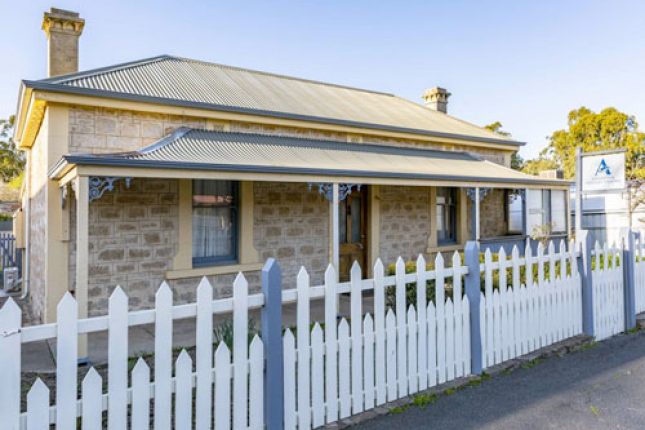
All around SA interesting historical sources are found in local communities - like here at the Angaston History Centre
Historians distinguish between primary and secondary sources.
Secondary sources such as published books and periodicals held in libraries are often the starting point for research. They can provide you with both broad background and specific detailed information. While you can borrow books from local libraries, in reference libraries such as the State Library of South Australia, or the History Trust’s own research library you need to look at the books on site. References such as footnotes and bibliographies in good history books can point you in the direction of other useful sources.
Primary sources are unpublished documents and all kinds of archival records including maps and photographs. Archival records are documents such as letters, diaries and minute books which have been written or gathered together by people during the course of their personal, family, business and working lives. They are preserved in archives for the benefit of future generations because they are regarded as having continuing historical value.
In South Australia there are numerous archives of different sizes and types which are open to the public including:
- State Records of South Australia for state government records (www.archives.sa.gov.au)
- The Archival collection at the State Library of South Australia, often referred to as the Mortlock Library, for public and private records (www.slsa.sa.gov.au)
- National Archives of Australia for Commonwealth records (www.naa.gov.au)
- Church archives, such as the Lutheran Archives, Anglican Archives, Adelaide Catholic Archdiocesan Archives
- Council Archives for local government records
- Historical collections in local and regional libraries
- Collections held and managed by historical societies and museums
- Community, family and private collections.
You cannot browse the stacks in an archive and sometimes finding aids such as lists of documents are absent or incomplete, so you might need a lot of search time. You cannot borrow material from archival collections and there are rules to be followed when reading documents to guarantee their preservation. Take the time to delve into archives as it is often the actual documents of the time you are researching which provide the gems in the treasure hunt.
Newspapers and periodicals are valuable contemporary records. Many newspapers are available at the State Library of South Australia on microfilm. Newspapers — international, national and local — provide details of major events as well as social commentary and are a good place to find information about individuals and community concerns. There is an index to The Advertiser and its precursors, The Register and The Observer, called the Manning Index which covers the years 1837 to 1937. (www.slsa.sa.gov.au/manning) Some examples of valuable local papers are
- Transcontinental (NW of SA)
- The Islander (Kangaroo Island)
- The Border Watch (Mt Gambier)
- Bunyip (Gawler)
- Murray Pioneer (Renmark)
- Pinnaroo & Border Times (Pinnaroo)
Photographs and other illustrative materials such as drawings, maps and plans are available in many archives. The State Library of South Australia, like other major repositories, has digitised many photographs allowing images to be viewed on-line. Remember the History Trust has its own Glass Negative Collection comprising South Australian photographs dating from 1890 to 1960.
Oral History can add human depth to any story. South Australia is lucky to have the JD Somerville Oral History Collection, established in 1987, as the central repository for oral history recordings. The collection houses a wealth of great stories and voices. It is valuable to record interviews yourself to preserve local stories and the memories of elderly residents. Contact the SA branch of the Oral History Association of Australia to find out about their next Oral History Workshop. In this day session, you will learn how to do oral history and train on high quality recording equipment which you can borrow, at no cost, from the Library for your project. (www.ohaa-sa.com.au)

